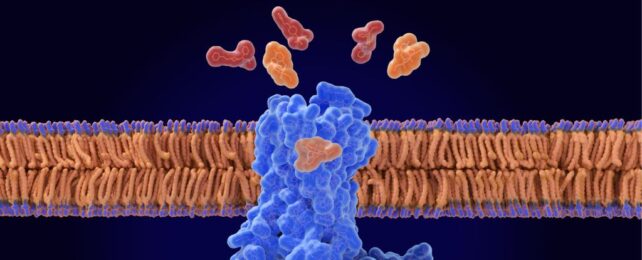The United States is in the throes of a deadly opioid epidemic that could claim the lives of millions by 2029.
A recent breakthrough in overdose treatments could offer a new strategy for the public health emergency.
The study, led by researchers at Stanford University and Washington University in St. Louis, introduces a novel drug, called compound 368, that seems to greatly enhance the life-saving effects of naloxone in mice.
Naloxone (brand name Narcan) is one of the most common and effective opioid overdose treatments available today in the US without a prescription. It is also an opioid, but instead of activating receptors in the brain, spinal cord, and peripheral nervous system, it deactivates the receptors.
While the medicine, which can be injected or administered through the nose, is quite successful at blocking these receptors, it only deactivates them for about 2 hours. Fentanyl can last in the bloodstream for up to 8 hours.
Compound 368 could be the solution scientists have been searching for.
In human cells in the lab, compound 368 enhanced naloxone's deactivation of opioid receptors by 7.6 fold. It also kept naloxone bound to these receptors 10 times longer.
"Many people who overdose on opioids need more than one dose of naloxone before they are out of danger," says anesthesiologist Susruta Majumdar from Washington University in St. Louis.
"This study is a proof of concept that we can make naloxone work better – last longer and be more potent – by giving it in combination with a molecule that influences the responses of the opioid receptor."
Compound 368 was found in a library of 4.5 billion molecules, after researchers went looking for compounds that can bind to alternative sites on the body's opioid receptors when naloxone is already present.
Using a special electron microscope, the team of scientists has shown that the compound binds to a receptor site next to naloxone to stabilize and inactivate the opioid receptor.
The authors of the study, led by biochemist Evan O'Brien at Stanford, explain that compound 368 works in cooperation with low doses of naloxone to both reverse and block the deathly consequences of morphine and fentanyl, such as severely slowed breathing rates.
When compound 368 was injected on its own into living mice who had been given a high dose of morphine, the novel drug did not have a significant impact.
But when 368 was combined with a low dose of naloxone and delivered to mice, it modestly lowered morphine-induced respiratory depression.
When it comes to fentanyl – an opioid 100 times more potent than morphine – the combination treatment appears to be even more powerful.
"Regardless of the dose of naloxone, treatment with 368 resulted in a significant enhancement of the ability of naloxone to reverse fentanyl-induced" effects," the authors of the study conclude.
Whether or not the same holds true for mixed opioids is unclear. Recently, scientists have found street drugs in the US containing combinations of fentanyl, heroine, and a non-opioid horse tranquilizer called xylazine.
When xylazine and fentanyl are used together, they significantly raise the risk of overdose.
Compound 368 still needs to be tested in humans, but neuropharmacologist Catherine Cahill from the University of California, Los Angeles, who was not involved in the study, argues in a Nature review of the study that this is "a considerable advance… opening up fresh avenues of investigation in the search for solutions to the opioid crisis."
The study was published in Nature.
